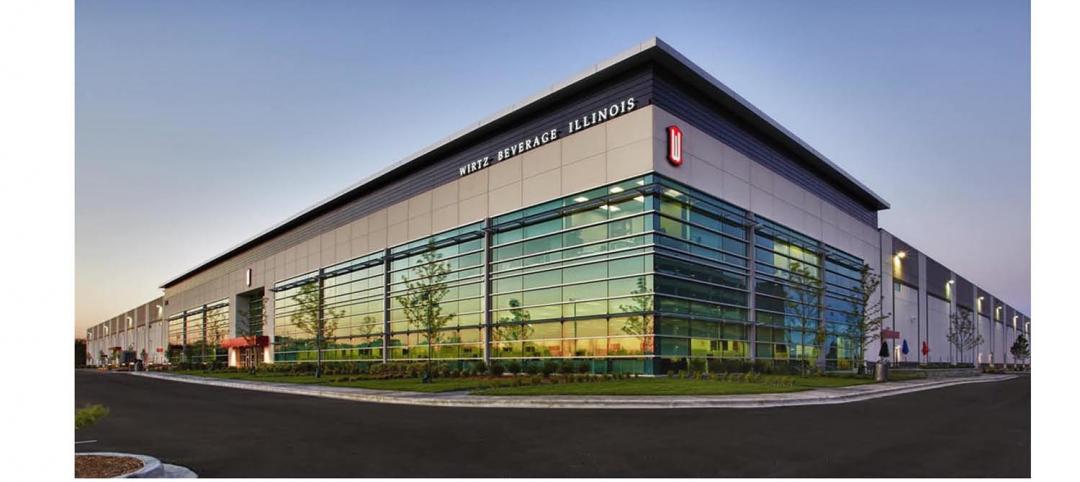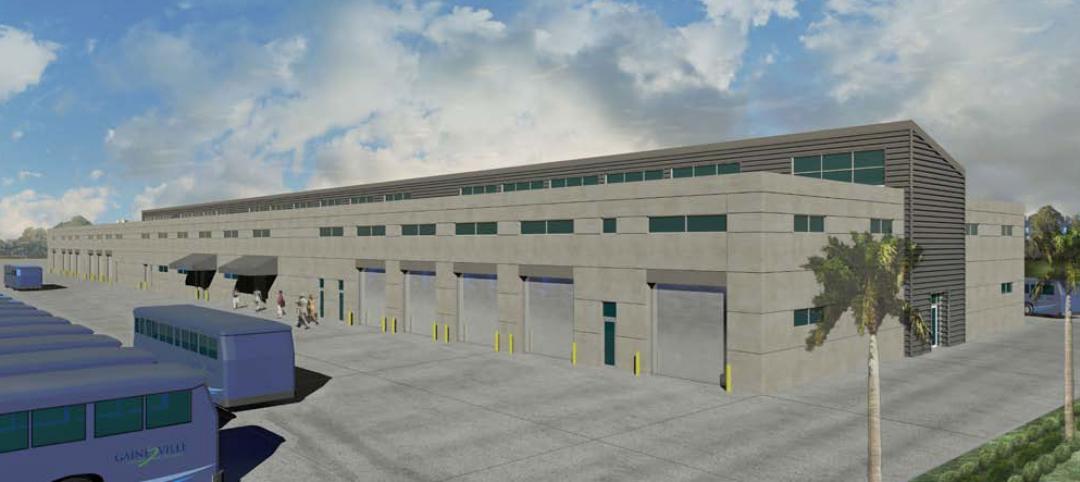One of the biggest criticisms of the LEED process is its claim that using it will help save on operating costs, while in fact, many projects don’t reach that goal. Of course, until a building is completed and systems begin to operate, the owner doesn’t know how much energy the building really uses. Once a building has some history, energy models can be modified to make better projections for the building’s energy consumption. But the owner may not get all the answers if adequate metering systems are not in place to measure the energy loads of the building.
The best way to track sources of energy consumption and verify any savings is to install some type of sub-metering. Before this can be done in existing buildings, the building owner needs to consider the many factors that pour into energy usage and how to track them. This can be done through the process of retrocommissioning, which typically has three phases: planning, investigation, and implementation. It starts with evaluation of the building and its systems which can include heating, ventilation, cooling, electrical, and control and cabling systems.
Retrocommissioning is basically redoing the commissioning process by looking at how the building systems are operating (by installing temporary metering equipment), identifying the optimal performance for equipment and fine tuning everything. This can be quite a challenge since existing buildings may have a variety of equipment that may have been installed at different times. It might mean replacing older or poorly working systems or getting new and old systems working together.
Evaluating options
An energy audit is the first step in determining where building owners want to save money and what they are trying to accomplish. Through a step-by-step process, we look at how energy is being used. Then we identify opportunities for change and work with clients to choose which ones to implement. Our energy audits are done through the multi-level ASHRAE system. Level 1 is a walk-through analysis; Level 2 is the energy survey and analysis; and Level 3 is the detailed analysis with a list of suggested capital modifications. Usually Level 2 is where the core of the work gets done.
THE PROCESS
Retrocommissioning is a method of reviewing existing building operating systems, identifying optimal performance and establishing a step-by-step process for improvement.
• Determine objectives
• Evaluate current systems
• Install monitoring as needed
• Identify optimal performance factors
• Create implementation plan and documentation
This process creates a dashboard for evaluating operating systems and a plan to optimize energy usage. A number of different programs can be set up to monitor what the building is doing so issues can be corrected. Having an information control system in place also means being able to troubleshoot items faster. Part of that means having algorithms built into the building management system. For instance, if there are 20 air handlers running and one of the units starts to operate outside the system set points, the algorithm that continuously reviews the units operation, notifies the facility operator of the issue, so the operator can investigate and take corrective measures.
Another building management system algorithm that is sometimes used can track when people arrive at the building(s) in the morning and set the systems to warm the building(s) up in a more efficient manner. Trying to tweak things like this means learning the behavior of building occupants to optimize programs.
Motion sensors and occupancy control systems can also help and have become very popular. Now, there is a big push to have controls on electric outlets so they will turn off when the building is in unoccupied mode to reduce plug loads. Given the number of outlets in most buildings, this can be a very expensive proposition. As we try to get to net zero, concepts like this can help control what the end user does in the building, but all have a cost that may or may not be offset by energy savings.
Monitoring systems
We find it really comes down to having an engineered systematic approach that involves putting in sub-metering to monitor where the energy is being used for both electric and gas. Every utility has a meter. Sub-metering refers to the monitoring system that is added on specific equipment, systems, processes, or floors. Some clients install extensive sub-metering while others choose a simple one, depending on cost to install and the projected payback.
Tracking energy consumption through sub-metering is currently at a 40-to-60 percent ratio of clients who do and those who do not install sub-metering in their projects. As price per kilowatt hour increases, metering is becoming more prevalent because it gives building owners the information they need to bring down usage costs. The types of buildings most viable for sub-metering include laboratory environments, such as pharmaceutical research and development, data centers, and commercial real estate.
Regional factors
Retrocommissioning and continuously monitoring (commissioning) systems are becoming more attractive in certain geographical areas as well. In the Northeastern United States, for example, it comes down to environment and utility rates. The energy usage is higher and rates are higher in this area, making it much more attractive for building owners to use these programs. In our experience, retrocommissioning has achieved between 30 and 40 percent cost savings.
If an owner can get a rebate for buying new equipment such as a chiller, that can mean additional benefits. New York City has programs that help consumers based on local laws (LLs). This includes LL84 which calls for benchmarking the property; LL85 that deals with energy conservation; LL87 that encourages energy audits when you retrocommission; and LL88 for metering. These laws apply when a building owner goes through the program and applies for rebates related to it. This is just one example of how utility, city, or state programs are proving helpful.
Long-term payback
The benefits of retrocommissioning are ongoing. Upon completion of retrocommissioning, the team identifies low cost and approved items based on their investigation and will work with the client through implementation. This will sometimes include developing a systems manual for all the installed equipment. This manual is used in training the facilities staff to understand the best practices for the operation and maintenance of these new systems.
For owners of existing buildings, retrocommissioning creates a baseline to compare future building energy consumption. Continuously monitoring systems can be installed to maintain the building improved performance and to identity issues faster and more efficiently.
DAVIDE VETTRAINO is Vice President, Regional Business Unit Leader, NV5 Northeast Region in Woburn, MA. He has more than 30 years of experience providing strategic leadership to high-growth organizations and is currently principal-in-charge of the Boston location, responsible for strategic planning, client relationships and professional development. He implements initiatives to improve quality, client satisfaction, and bottom-line financial performance. He can be reached at dvettraino@sebesta.com.
MICHAEL MORRISSEY, LEED AP, BSC is Senior Group Leader, NV5 Northeast region. He has more than 27 years of experience in the engineering field, in design, construction, and commissioning and is a LEED Accredited Professional; NEBB Certified Professional for Building System Commissioning; American Society of Heating, Refrigerating, and Air-Conditioning Engineers (ASHRAE). His specialties include commissioning, LEED consulting and administration, retro-commissioning, TAB (NEBB), O&M operations and support services energy management, HVAC system design, healthcare and lab facilities. He can be reached at mmorrissey@sebesta.com.
Related Stories
| Dec 4, 2012
Sto Corp. announces new distributor in the Carolinas
Company will now have coverage in several parts of North Carolina.
| Dec 4, 2012
Wirtz Beverage Illinois’ corporate headquarters completed
WBI Center, a new state-of-the-art facility, is designed by Ware Malcomb.
| Dec 4, 2012
Wagner joins Ghafari as Manager of Structural Engineering
Wagner comes to Ghafari from Walter P Moore, where he served as a principal, chaired the construction administration task force and led the design of numerous projects ranging in size from $10 million to $70 million.
| Dec 4, 2012
City of Gainesville to break ground on $33 million bus fleet maintenance and ops facility
The 140,000-sf facility will include dispatch, administrative and maintenance facilities.
| Nov 28, 2012
Project team to showcase design for first mixed-use retail center of its kind in Mexico City
Project reaching construction milestone, offering national model for urban development in Mexico.
| Nov 28, 2012
Cummins announces ratings classification for data center power systems
The Data Center Continuous ratings span the range of Cummins Power Generation’s high horsepower diesel generator sets, from 1 MW up to 2.5 MW, and will apply to both 50 Hz and 60 Hz configurations.
| Nov 28, 2012
Francis Cauffman appoints Stainbrook Director of Higher Education
Stainbrook has 16 years of experience as a strategic planner and urban designer working on complex projects on- and off-campus.
| Nov 27, 2012
SFIA releases technical guide for cold-formed steel framing products
The 114-page book covers both structural and non-structural applications, including section properties of SFIA member product profiles, and complete load and span tables for most applications.
| Nov 21, 2012
Architecture Billings Index positive for third straight month
All regions reporting positive business conditions
| Nov 20, 2012
PC Construction completes Juniper Hall at Champlain College
Juniper Hall is on track for LEED Gold certification from the U.S. Green Building Council.














